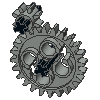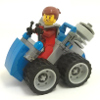| Welcome, Guest |
You have to register before you can post on our site.
|
| Forum Statistics |
» Members: 5,518
» Latest member: bthomasz
» Forum threads: 6,295
» Forum posts: 52,503
Full Statistics
|
| Online Users |
There are currently 256 online users.
» 1 Member(s) | 250 Guest(s)
Applebot, Bing, Facebook, Google, Yandex
|
| Latest Threads |
Promotional Sets 2025
Forum: Official Models
Last Post: Philippe Hurbain
5 hours ago
» Replies: 7
» Views: 5,449
|
About size of flattened s...
Forum: Official File Specifications/Standards
Last Post: Philippe Hurbain
2025-12-17, 7:06
» Replies: 10
» Views: 362
|
Would BrickLink Designer ...
Forum: Official Models
Last Post: Orion Pobursky
2025-12-16, 14:53
» Replies: 1
» Views: 458
|
Some help with part 5608 ...
Forum: Parts Authoring
Last Post: Peter Grass
2025-12-15, 5:48
» Replies: 1
» Views: 185
|
Parts Request: Ninjago Dr...
Forum: Part Requests
Last Post: Peter Grass
2025-12-14, 7:55
» Replies: 4
» Views: 516
|
Part Request Boat Pieces
Forum: Part Requests
Last Post: San
2025-12-13, 10:30
» Replies: 4
» Views: 374
|
Existing Part Edit Reques...
Forum: Parts Authoring
Last Post: SNIPE
2025-12-12, 19:33
» Replies: 157
» Views: 376,568
|
Technic 1990
Forum: Official Models
Last Post: Takeshi Takahashi
2025-12-10, 16:32
» Replies: 17
» Views: 23,284
|
Alternate, Mobile Friendl...
Forum: LDraw.org Announcements
Last Post: Orion Pobursky
2025-12-08, 18:53
» Replies: 2
» Views: 514
|
Request for sticker scan ...
Forum: Part Requests
Last Post: Sylvain Sauvage
2025-12-08, 13:40
» Replies: 3
» Views: 461
|
|
|
| LSynth integration |
|
Posted by: Mario Pascucci - 2015-01-26, 17:50 - Forum: LDraw Editors and Viewers
- Replies (2)
|
 |
Hi all.
One next step in develop JBrickBuilder is to integrate LSynth-like functionalities.
Looking to other models, created with various editors/CAD, I found two strategies:
1- direct use LSynth primitives in model
2- use a special META command, "parseable" by original CAD program, and include a "fall-back" for other editors.
I prefer the second method (used by LDCad, BTW), first requires that editors and viewers have LSynth installed.
But, there is a problem: LSynth is a compiled binary, and JBrickBuilder is Java, that is (or should be) cross-platform. I don't want to maintain three or more version, one for every OS.
So, LSynth is licensed GPLv2, and I'm thinking to port to Java, under a GPLv3 license, as a JAR package.
So I'm asking to developers here if there are objections. Of course, I will clearly include references to original project and developers.
Mario
|

|
|
| LDCad 1.4a (win+linux) |
|
Posted by: Roland Melkert - 2015-01-24, 20:42 - Forum: LDraw Editors and Viewers
- Replies (34)
|
 |
I just released LDCad 1.4a it fixes a couple of problems and includes new snap info and part bin tweaks.
Like always you'll find the newest version at:
http://www.melkert.net/LDCad/download
Biggest change is the new 'figures' branch inside the sorted part bin group. It allows for easy access to the new friends figures, it also includes the old minifig groups (which I tweaked a bit in order to incorporate the new arms) and new Fabland and Technic figure groups.
I've also added part snapping to all parts in those groups except for the minifig hair/hat and accessories.
And I tried to apply some of the smaller requests from the 1.4 thread, like: ESC to deselect and allowing lower FOV etc.
Finally as LDCad now is included in the AIOI I also updated my own installer to look for the AIOI location of LDCad in order to apply updates as the AIOI installs in "Program Files (x86)\LDraw\LDCad" instead of "Program Files (x86)\LDCad" by default.
With this version released I'm back to working on 1.5, which will probably take another couple of months to complete. But like always don't hesitate to report problems / feature requests.
|

|
|
| Another experiment in instruction building |
|
Posted by: Nicola - 2015-01-23, 12:47 - Forum: LDraw File Processing and Conversion
- Replies (3)
|
 |
I've made some more experiments with instruction building programs. I wanted to investigate into JavaFX, it's a promising platform with many useful features: css support, a powerful scenegraph, effects, a great look, etc.
I've come up with a small prototype, where a pre rendered model is layed out on a page. Items are organized into a tree of "boxes": the assembly box is inside the step box (along with the part list and number), the step box is inside the page box etc.
The program lets you move boxes around and support some basic snapping.
I've tested this mechanism becouse i'm not a fan of LPub relative positioning of things (if i'm not wrong, in a step in LPUB, things are placed around the "assembly image", with the ability to choose which corner or side).
My approach gives more freedom, but is also more time consuming becouse things must be manually corrected (for example if you reduce the height of a step, you have to manually bring up all the following steps).
I'm not really sure my approach is better, expecially after you put in callouts or column subdivision etc. to complicate things. Maybe a solution could be to add buttons to programmatically organize a page into a particular layout (single column, double column for example), that do the big work, letting the user redefine small details. Or buttons like "compact steps" etc. It doesn't seems like the best solution anyway.
What do you guys think?
You can download the program here. It needs Java 8, can be launched with java -jar testbi.jar
Here's a screenshot, of course it's just a prototype, i've just placed buttons around to test some functionalities. Zooming and rendering already work, as the togglable design borders.
![[Image: JDRGMm4.png]](http://i.imgur.com/JDRGMm4.png)
Here's a sample output:
![[Image: xwnBIcS.png]](http://i.imgur.com/xwnBIcS.png)
|

|
|
| LDraw All-In-One-Installer 2014-02 now available |
|
Posted by: Willy Tschager - 2015-01-22, 21:46 - Forum: LDraw.org Announcements
- No Replies
|
 |
The LDraw All-In-One-Installer 2014-02, in short AIOI, has been released.
The AIOI supports Windows XP (Home and Pro), Windows Vista (all versions) and Windows 7 (all versions). On 64-Bit Operating Systems it will install in the "Program files (x86)" folder. The Installer will NOT run on Windows 95, 98, ME, NT Ver 4, 2000, or XP below SP2.
Changes: - Moved LSynth parts from Unofficial\LSynth to Unofficial\Parts folder to ease usage in LPub
- Updated MPDCenter
- Updated SR3D
- Added LDCad
There are currently some issues with the registration of a file needed by Sticker Generator when installing on Windows 8.
You can download the AIOI from:
Home > Help > Get Started > LDraw All-In-One-Installer
Many thanks to all the programmers who contributed to this release.
Willy Tschager
(LDraw.org Content Manager)
|

|
|
|